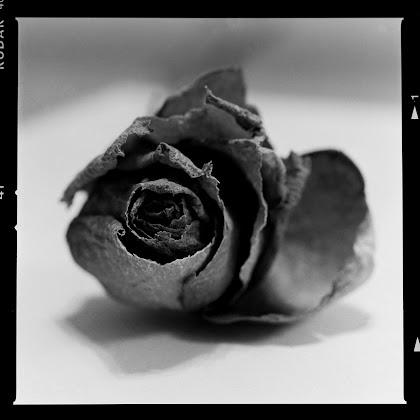One of my favorite films of all time was Agfa's APX 25. The film was produced by Agfa from 1989 to 2000. Although it had the slow film speed of ASA/ISO 25, the film offered fine grain, spectacular detail and fantastic contrast. At the time, I was printing 16x20 black and white silver gelatin prints and my negatives held up without any substantial grain visible.
During the great digital rise in the early 2000's Agfa itself fell into bankruptcy and many of its products were picked up by Maco Photo. Most of the old Agfa films are now branded under the Rollei label which now include Rollei RPX 25.
I recently purchased two bricks of RPX 120MM film (20 rolls) for my Hasselblad cameras with high expectations. However, the first roll of film I used had a strange looking defect to it once it was processed and scanned (image below)
As you can see in the image, there's a strange texture that's visible on the image itself. This strange pattern appeared on every negative from that roll of film. At first I thought my developer was bad but after doing some research into the defect, I discovered that other photographers had experienced the same issue.
Digging around some more showed that the backing paper on the RPX roll of film was the issue. Photographers were replying to posts saying that heat and humidity was the defining factor causing backing paper to be copied onto the negative during exposure. My own experiments seem to confirm this. Keeping the film in the refrigerator until use, exposing the film and then placing back into the refrigerator until development time seemed to do the trick.
After contacting @hellorolleianalog support, I received the following message: "It is very difficult to give a general cause. There are various factors that can influence the image result. The shooting conditions (temperature and humidity), the storage and the development of the film together have a great influence on the image result.
We have already been able to confirm the phenomenon of such "spots" on the emulsion in very few cases. Unfortunately, we have not yet been able to conclusively determine the cause. It is not always possible to speak of a faulty batch, as the effect does not occur uniformly. Over the last few years, we have been able to further improve the production quality. It is therefore all the more regrettable that your film is affected."
The mention of the "heat and humidity" leads me to think that the roll of film that I received and used was effected by the conditions of the brutal midwest summer.
With that information in mind, I tested out a second roll of the film within a controlled environment. The below abstract image was photographed with Rollei RPX 25 film which was taken directly from the refrigerator, exposed and developed within a matter of two hours. This image reflects the beauty of this film and what it's capable of.
Currently most of my photography is indoor still life images so I have a certain amount of control I can employ over with use and development. However as I write this, here in the midwest it's nearly 90 degrees with 90 percent humidity so to use the film outside in a landscape scene is problematic. Maybe once fall settles with less heat and humidity the film might be okay for landscapes but until then it's best used inside.
Finally, if you're using 35MM or 4x5 cameras with RPX 25 film, there is no mottling issue as no backing paper is used for these films. However medium format users beware.






